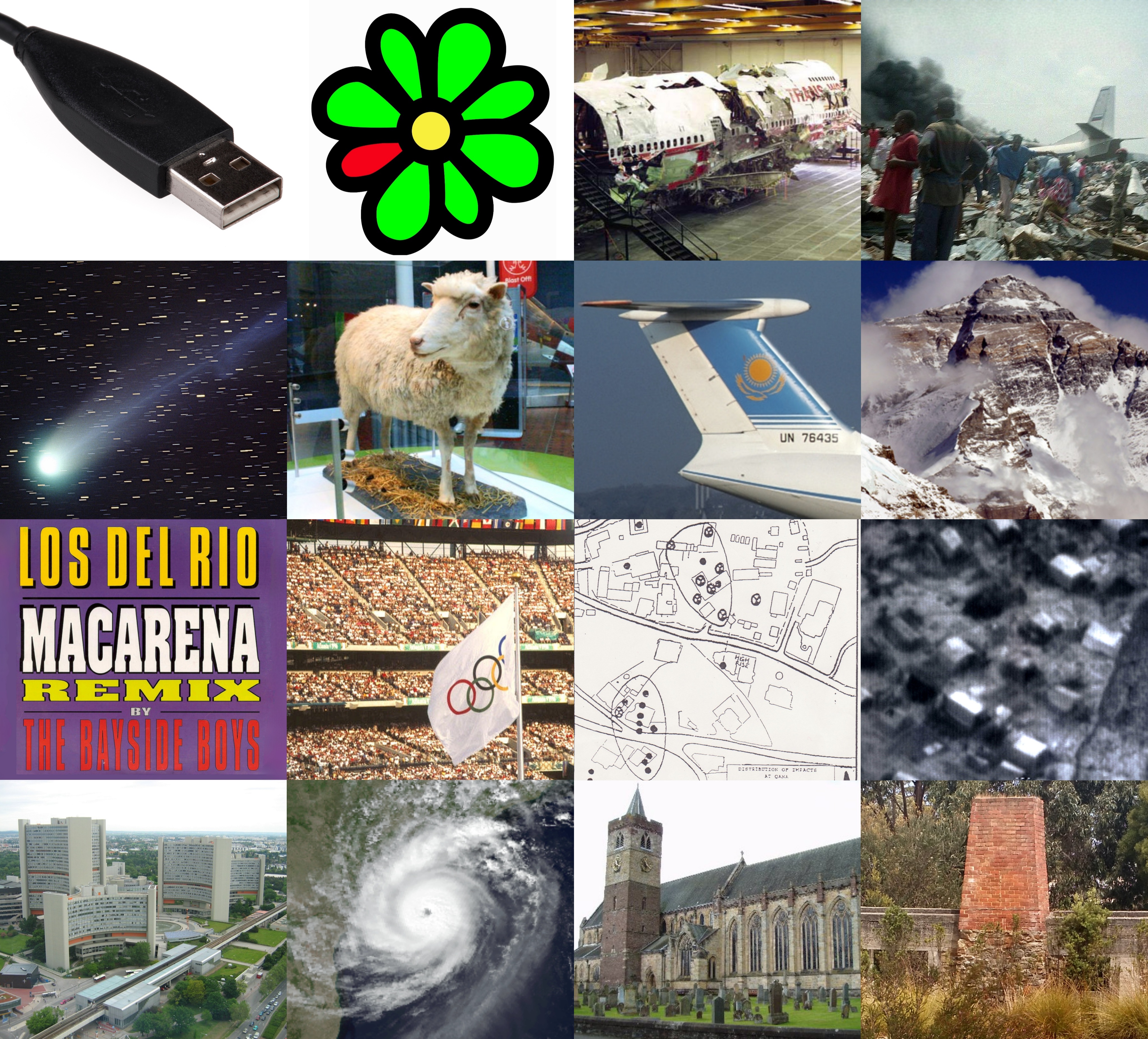|
Karakurizōshi Ayatsuri Sakon
is a Japanese manga series written by (under the alias Sharakumaro) and illustrated by Takeshi Obata. It was serialized in Shueisha's manga magazine ''Weekly Shōnen Jump'' from May 1995 to January 1996, with its chapters collected in four bound volumes. The plot follows Tachibana Sakon, a puppeteer who solves mysteries with Ukon, a puppet. The manga was adapted into a 26-episode anime television series by TMS Entertainment and broadcast on the satellite network Wowow from October 1999 to March 2000. Characters ; : :A master puppeteer who likes to travel and solve mysteries along his journeys with his puppet and best friend, Ukon. When he does not have Ukon with him, he is a very timid, humble young boy. However, once he places Ukon on his hand, he develops a careful, quiet, observant and calculating personality. He is displayed as a brilliant young man who can solve any case but feels that sometimes it is best "not to see everything so clearly", and is often underesti ... [...More Info...] [...Related Items...] OR: [Wikipedia] [Google] [Baidu] |
Tankōbon
A is a standard publishing format for books in Japan, alongside other formats such as ''shinsho'' (17x11 cm paperback books) and ''bunkobon''. Used as a loanword in English, the term specifically refers to a printed collection of a manga that was previously published in a serialized format. Manga typically contain a handful of chapters, and may collect multiple volumes as a series continues publication. Major publishing Imprint (trade name), imprints for of manga include Jump Comics (for serials in Shueisha's ''Weekly Shōnen Jump'' and other Jump (magazine line), ''Jump'' magazines), Kodansha's Weekly Shōnen Magazine, Shōnen Magazine Comics, Shogakukan's Shōnen Sunday Comics, and Akita Shoten’s Weekly Shōnen Champion, Shōnen Champion Comics. Manga Increasingly after 1959, manga came to be published in thick, phone book, phone-book-sized weekly or monthly anthology list of manga magazines, manga magazines (such as ''Weekly Shōnen Magazine'' or ''Weekly Shōnen Jump ... [...More Info...] [...Related Items...] OR: [Wikipedia] [Google] [Baidu] |
Agency For Cultural Affairs
The is a special body of the Japanese Ministry of Education, Culture, Sports, Science and Technology (MEXT). It was set up in 1968 to promote Japanese arts and culture. The agency's budget for FY 2018 rose to ¥107.7 billion. Overview The agency's Cultural Affairs Division disseminates information about the arts within Japan and internationally, and the Cultural Properties Protection Division protects the nation's cultural heritage. The Cultural Affairs Division is concerned with such areas as art and culture promotion, art copyrights, and improvements in the national language. It also supports both national and local arts and cultural festivals, and it funds traveling cultural events in music, theater, dance, art exhibitions, and film-making. Special prizes are offered to encourage young artists and established practitioners, and some grants are given each year to enable them to train abroad. The agency funds national museums of modern art in Kyoto and Tokyo and The National ... [...More Info...] [...Related Items...] OR: [Wikipedia] [Google] [Baidu] |
Shueisha Manga
is a Japanese publishing company headquartered in Chiyoda, Tokyo, Japan. Shueisha is the largest publishing company in Japan. It was established in 1925 as the entertainment-related publishing division of Japanese publisher Shogakukan. The following year, Shueisha became a separate, independent company. Manga magazines published by Shueisha include the '' Jump'' magazine line, which includes shonen magazines ''Weekly Shōnen Jump'', '' Jump SQ'', and '' V Jump'', and seinen magazines ''Weekly Young Jump'', ''Grand Jump'' and ''Ultra Jump'', and the online magazine ''Shōnen Jump+''. They also publish other magazines, including ''Non-no''. Shueisha, along with Shogakukan, owns Viz Media, which publishes manga from both companies in North America. History In 1925, Shueisha was created by major publishing company Shogakukan (founded in 1922). became the first novel published by Shueisha in collaboration with Shogakukan—the temporary home of Shueisha. In 1927, two novels ... [...More Info...] [...Related Items...] OR: [Wikipedia] [Google] [Baidu] |
Theatre In Anime And Manga
Theatre or theater is a collaborative form of performing art that uses live performers, usually actors to present experiences of a real or imagined event before a live audience in a specific place, often a Stage (theatre), stage. The performers may communicate this experience to the audience through combinations of gesture, speech, song, music, and dance. It is the oldest form of drama, though live theatre has now been joined by modern recorded forms. Elements of art, such as painted scenery and stagecraft such as lighting are used to enhance the physicality, presence and immediacy of the experience. Places, normally buildings, where performances regularly take place are also called "theatres" (or "theaters"), as derived from the Ancient Greek θέατρον (théatron, "a place for viewing"), itself from θεάομαι (theáomai, "to see", "to watch", "to observe"). Modern Western theatre comes, in large measure, from the theatre of ancient Greece, from which it borrows tec ... [...More Info...] [...Related Items...] OR: [Wikipedia] [Google] [Baidu] |
Mystery Anime And Manga
Mystery, The Mystery, Mysteries or The Mysteries may refer to: Arts, entertainment, and media Fictional characters *Mystery, a cat character in ''Emily the Strange'' *Mystery, a seahorse that SpongeBob SquarePants adopts in the episode " My Pretty Seahorse" Films * ''Mystery'' (2012 film), a 2012 Chinese drama film * ''Mystery'' (2014 film), a 2014 Chinese suspense thriller adventure film * ''Mystery, Alaska'', a 1999 comedy-drama film * '' Gumnaam – The Mystery'', a 2008 Indian Hindi-language thriller film * '' Room: The Mystery'', a 2014 Indian film Genres * Mystery fiction, a genre of detective fiction * Mystery film, a genre in cinema Literature * ''Mysteries'' (novel) or ''Mysterie'', an 1892 existentialist novel by Knut Hamsun * ''Mystery'' (novel), a 1990 novel by American author Peter Straub *'' The Mystery'' (1907), a novel by Samuel Hopkins Adams Newspapers * ''Mystery'' (newspaper), an African American newspaper by Martin Delany Music Groups * Mystery ... [...More Info...] [...Related Items...] OR: [Wikipedia] [Google] [Baidu] |
Light Novels
A is a type of popular literature novel from Japan usually classified as young adult fiction, generally targeting teens to twenties or older. The definition is very vague, and wide-ranging. The abbreviation of "''raito noberu''" is or, in English, LN. The average length of a light novel is about 50,000 words, and is published in the '' bunkobon'' format ( A6, ). Light novels are subject to dense publishing schedules, with new installments being published in three-to-nine-month intervals. Light novels are very commonly illustrated in a manga artstyle, and are often adapted into manga and anime. Whilst most light novels are published only as books, some have their chapters first serialized monthly in anthology magazines or via the internet as web novels before being collected and compiled into book format, similar to how manga is published. Details Plots frequently involve romantic comedy and isekai fantasy. To please their audience, in the 1970s, most of the Jap ... [...More Info...] [...Related Items...] OR: [Wikipedia] [Google] [Baidu] |
Jump J-Books
, also known as ''Jump Comics'', is a line of manga anthologies (manga magazines) created by Shueisha. It began with ''Shōnen Jump'' manga anthology in 1968, later renamed ''Weekly Shōnen Jump''. The origin of the name is unknown. The ''Jump'' anthologies are primarily intended for male audiences, although the ''Weekly Shōnen Jump'' magazine has also been popular with the female demographic. Along with the line of manga anthologies, ''Shōnen Jump'' also includes a crossover media franchise, where there have been various ''Shōnen Jump'' themed crossover anime and video games (since '' Famicom Jump''), which bring together various ''Shōnen Jump'' manga characters. History In 1949, Shueisha got into the business of making manga magazines, the first being ''Omoshiro Book''. In 1951, Shueisha created a female version of that anthology entitled ''Shōjo Book''. ''Shōjo Book'' led to the publication of the highly successful Shōjo manga magazine: ''Ribon''. ''Omoshiro Book'' ... [...More Info...] [...Related Items...] OR: [Wikipedia] [Google] [Baidu] |
Fictional Puppeteers
Fiction is any creative work, chiefly any narrative work, portraying individuals, events, or places that are imaginary or in ways that are imaginary. Fictional portrayals are thus inconsistent with fact, history, or plausibility. In a traditional narrow sense, fiction refers to written narratives in prose often specifically novels, novellas, and short stories. More broadly, however, fiction encompasses imaginary narratives expressed in any medium, including not just writings but also live theatrical performances, films, television programs, radio dramas, comics, role-playing games, and video games. Definition and theory Typically, the fictionality of a work is publicly expressed, so the audience expects a work of fiction to deviate to a greater or lesser degree from the real world, rather than presenting for instance only factually accurate portrayals or characters who are actual people. Because fiction is generally understood as not adhering to the real world, the theme ... [...More Info...] [...Related Items...] OR: [Wikipedia] [Google] [Baidu] |
1996 Japanese Novels
1996 was designated as: * International Year for the Eradication of Poverty Events January * January 8 – A Zairean cargo plane 1996 Air Africa crash, crashes into a crowded market in the center of the capital city of the Democratic Republic of the Congo, Kinshasa, killing around 300 people. * January 9–January 20, 20 – Serious fighting breaks out between Russian soldiers and rebel fighters in Chechnya. * January 11 – Ryutaro Hashimoto, leader of the Liberal Democratic Party (Japan), Liberal Democratic Party, becomes Prime Minister of Japan. * January 13 – Prime Minister of Italy, Italy's Prime Minister, Lamberto Dini, resigns after the failure of all-party talks to confirm him. New talks are initiated by President Oscar Luigi Scalfaro to form a new government. * January 14 – Jorge Sampaio is elected President of Portugal. * January 16 – President of Sierra Leone Valentine Strasser is deposed by the chief of defence, Julius Maada Bio. B ... [...More Info...] [...Related Items...] OR: [Wikipedia] [Google] [Baidu] |
Japanese Sword
A is one of several types of traditionally made swords from Japan. Bronze swords were made as early as the Yayoi period (1,000 BC – 300 AD), though most people generally refer to the curved blades made from the Heian period (794–1185) to the present day when speaking of "Japanese swords". There are many types of Japanese swords that differ by size, shape, field of application, and method of manufacture. Some of the more commonly known types of Japanese swords are the ''uchigatana'', ''tachi'', ''ōdachi'', ''wakizashi'', and ''tantō''. Etymology The word ''katana'' was used in ancient Japan and is still used today, whereas the old usage of the word ''nihontō'' is found in the poem the Song of ''Nihontō'', by the Song dynasty poet Ouyang Xiu. The word ''nihontō'' became more common in Japan in the late Tokugawa shogunate. Due to importation of Western swords, the word ''nihontō'' was adopted to distinguish it from the . ''Meibutsu'' (noted swords) is a special designat ... [...More Info...] [...Related Items...] OR: [Wikipedia] [Google] [Baidu] |
Akino Arai
is a Japanese singer, songwriter, and lyricist for various anime theme songs and shows, including '' Record of Lodoss War'', ''Please Save My Earth'', ''Macross Plus'', ''Outlaw Star'', '' Kaze no Stigma'', ''Maoyu'', and ''Aria The Origination''. Biography Arai joined Victor Music Entertainment after graduating from university. She worked on collaborations with various artists there. Her first single, "Yakusoku" was released in 1986, and was used as an insert song for the anime '' Windaria''. She also released the album '' Natsukashii Mirai''. In 1988 she left her agency. In 1992, she released the singles "Kaze to Tori to Sora ~reincarnation~" and "Kooru Suna" which were used as songs for the '' Record of Lodoss War'' anime and '' The Weathering Continent'' drama CD, respectively. Her activity in anime continued with ''Please Save My Earth''. In 1994, she sang "Voices" for the ''Macross Plus'' OVA, where she also was the singing voice for Myung Fang Lone and Sharon Apple. She w ... [...More Info...] [...Related Items...] OR: [Wikipedia] [Google] [Baidu] |






